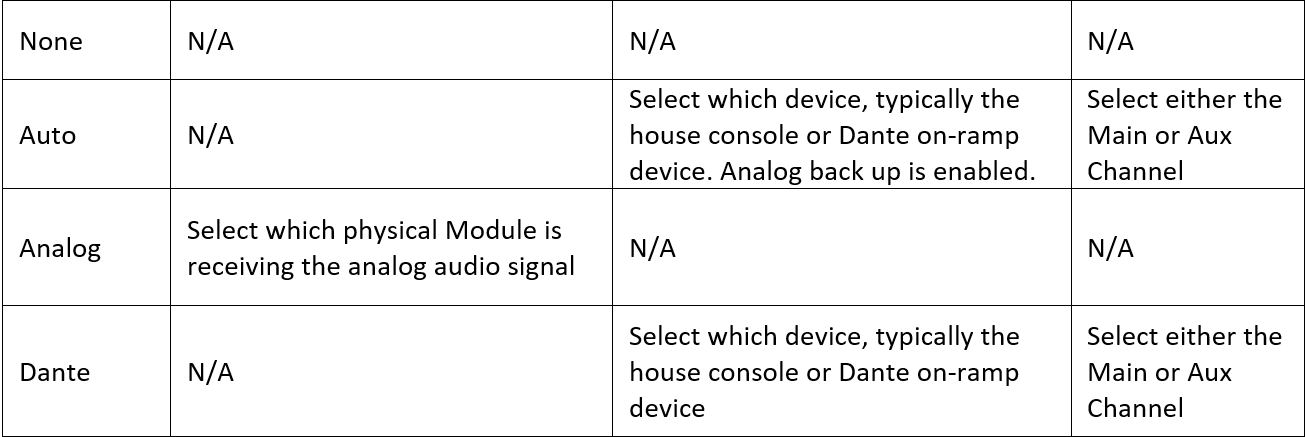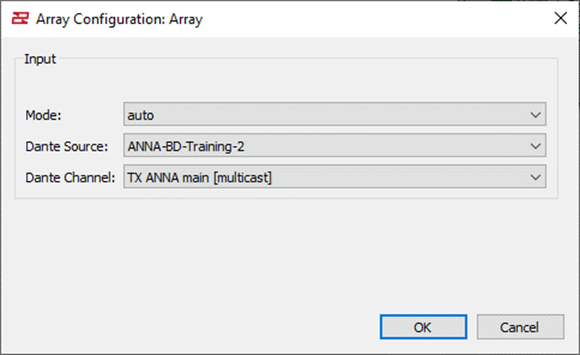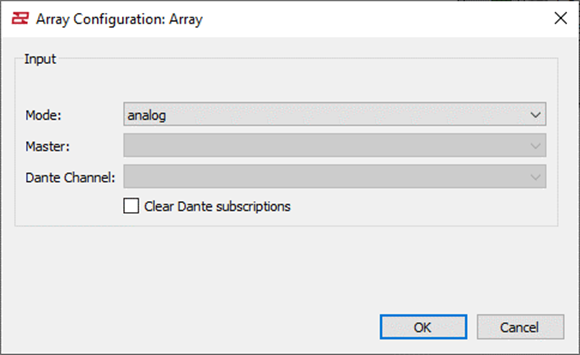Assigning Inputs in Resolution (RSX & NTX Series)
Inputs may be assigned by double-clicking the name of an Array. This opens the Input Configuration dialog box where you can select how you will feed audio to the System. Following are the available options based on the Mode you select:

*Note: You may receive a yellow banner with a warning that “Network settings out of sync: one or more input modes out of sync.” with Dismiss and Select Inputs buttons, or Dismiss and Sync Now buttons (depending on which parameters are out of sync). Clicking Select Inputs opens the Input Configuration dialog box, allowing this parameter to be confirmed for all modules. Clicking Sync Now synchronizes the EQ and processing parameters for all modules with the Resolution model.
WARNING: IT IS CRITICAL THAT ALL PARAMETERS ARE SYNCHRONIZED FOR ADAPTIVE MODULES TO FUNCTION PROPERLY. LISTENING TO ADAPTIVE OR RADIUS ARRAYS WITHOUT FULLY SYNCHRONIZED PARAMETERS OR WITH NETWORK ERRORS MAY PRODUCE UNEXPECTED ACOUSTICAL RESULTS AND IS NOT RECOMMENDED.
Selecting Auto
Selecting Auto will tell each module to search for a Dante source. Choose which Dante channel you want the Array to receive signal. This may be a Dante module transmitting an Analog or AES input or other Dante on-ramp source such as your Dante equipped digital mixing console. All other Radius modules in that Array will automatically be configured to receive the Dante audio signal from that source. Analog back up is enabled in this mode.

Selecting Analog
The only option for an analog configuration for a Radius system is to select analog from the Mode pull down. This changes each input assignment to the XLR Input/Thru connections per module.

Selecting Dante
Select which Dante source you want to use then choose which Dante channel you want the Array to receive signal. This may be a Dante module transmitting an Analog or AES input or other Dante on-ramp source such as your Dante equipped digital mixing console. All other Radius modules in that Array will automatically be configured to receive the Dante audio signal from that source.
